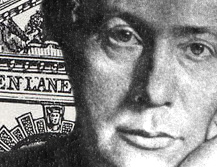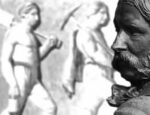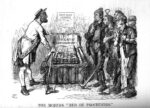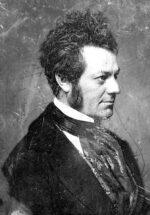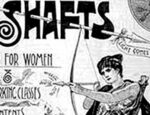Description
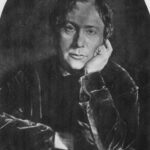 Meet Alfred Stevens (1817-1875), the Dorset joiner’s son who designed became a neoclassical artist. He designed the arch for the Green Lane Works in Sheffield, one of the most spectacular examples of factory architecture in the North of England.
Meet Alfred Stevens (1817-1875), the Dorset joiner’s son who designed became a neoclassical artist. He designed the arch for the Green Lane Works in Sheffield, one of the most spectacular examples of factory architecture in the North of England.
Stevens began work in his father’s workshop at the age of ten, but the generosity of the local vicar enabled him to travel to study in Italy. He returned to Britain in 1845 and took up a post teaching in the School of Design at Somerset House. But in 1850 he was hired as chief artist by the highly successful metalwork business H.E. Hoole & Co. in Sheffield. Henry Hoole wanted to memorialise his own election as Mayor of Sheffield in 1842, and Stevens designed a Victorian equivalent of a Roman emperor’s triumphal arch.
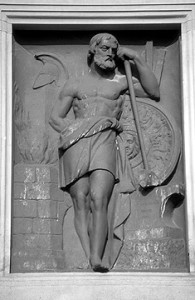 The Green Lane Works entrance arch was flanked by two bronze relief panels, with near life-size figures staring proudly out at the viewer—factory worker, factory owner, or the public. One is Vulcan, god of forges and heavy industry; he stands with a hoplite helmet and ornamental shield perhaps intended to suggest the arms of Achilles or the armour of Athena Parthenos. The other figure, the other, lond believed to be Athena/Minerva, holds a palette and stands in front of both an ornamental vase and a statuary bust: she is more likely to be a personification of Art.
The Green Lane Works entrance arch was flanked by two bronze relief panels, with near life-size figures staring proudly out at the viewer—factory worker, factory owner, or the public. One is Vulcan, god of forges and heavy industry; he stands with a hoplite helmet and ornamental shield perhaps intended to suggest the arms of Achilles or the armour of Athena Parthenos. The other figure, the other, lond believed to be Athena/Minerva, holds a palette and stands in front of both an ornamental vase and a statuary bust: she is more likely to be a personification of Art.
Stevens was a major influence on other artists and architects in Sheffield, especially Godfrey Sykes. He died suddenly in London, exhasuted from overwork, and is buried in Highgate cemetery.

